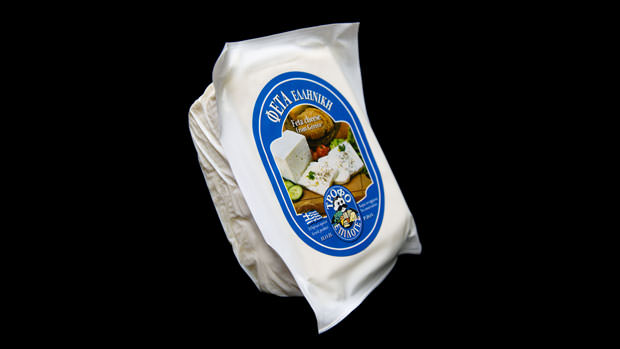To Greeks and non-Greeks all over the world, feta cheese is Greek. Traditional feta is a brined-curd cheese of 30% goat’s milk mixed with sheep’s milk. In 2002, feta was granted protected designation of origin product rights in the European Union. Only those cheeses produced in a specific way and manufactured in Macedonia, Thrace, Thessaly, Central Mainland Greece, the Peloponnese, and Lesvos can be called “feta.” All other similar cheeses produced elsewhere are called “white cheese.”
The first recorded reference to feta is during the Byzantine Empire which was called “prosphatos” or recent/fresh, and was stated from Crete. In 1494, there is description of the cheese being stored in brine, obviously feta. Feta comes from the Italian word “fetta” meaning slice because of either the way it is sliced to serve on a platter or sliced to store in barrels.
Although the EU gave Greek feta protected designation, there were other countries manufacturing white cheese using cow’s milk, and calling it feta. Could a Swedish meatball be known as anything else?
Recently, while negotiating a new trade pact between the Canada and the European Union, the EU demanded to examine the use by Canadian companies manufacturing white cheese and calling it feta. After extensive negotiations, the parties agreed to impose “established rights” on the word feta in favor of Greece and now the sale of the non-Greek feta must have listed on the label the phrase, “type of feta, feta cheese style, or feta imitation, and legible reference of the product’s origin.”
As in the EU, Canada has settled the question and agrees that feta is Greek.



